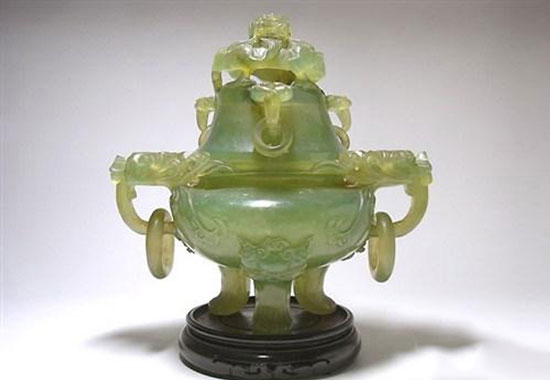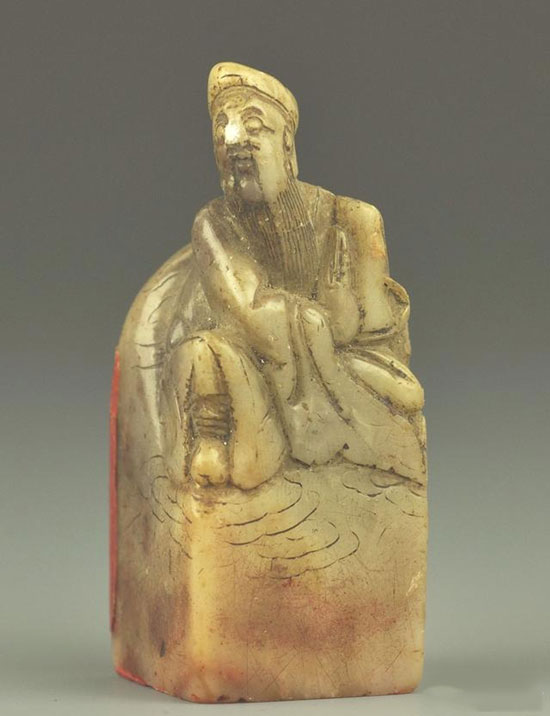The story about the seal goes back to the Shang and Zhou dynasties more than 3,000 years ago. The seal at that time was only used as a proof of commercial exchange of goods. After Qin Shihuang unified China, the scope of the seal was expanded to prove the rights and interests of those in power, and it was mastered by those in power as a tool to rule the people.
The seal is made of jade, bronze, gold, silver or stone. Jade is one of the most influential and widely used printing materials except bronze. It began in the Eastern Zhou Dynasty and flourished in Han Dynasty. The Wei and Jin Dynasties ended its prosperity. After the Sui and Tang Dynasties, it was once again popular with the ancient style. For thousands of years, history has continued in the ups and downs, and the dynasty has changed in the midst of wind and rain. The only constant is the jade seal that symbolizes supreme power.

The jade seal is given not only the power, but the engraved texts and forms, which bear the culture of the time, and the documents on which the seals are left, all of which are stories that are rarely known.
In 1932, during the period of the national united resistance, a jade seal was also born. It witnessed the financial development of the Chinese Soviet Republic.
In February 1932, the National Bank of the Chinese Soviet Republic was formally established, and Mao Zemin served as the president of the National Bank. In order to exercise the powers of the National Bank, with the help of Deng Zihui, Mao Zemin found a square jade from the Treasury Material Warehouse, and asked a man to stamp a square jade with a height of 6.3 cm and a width of 2.4 cm. There is a Buddha who is fascinated by the clouds. The Buddha statues are kind and humbly, and the four characters of the "National Bank" are carved, which symbolizes the initial formation of the Chinese Soviet Republic.

After the establishment of the National Bank of the Soviet Union, it promulgated the "Interim Regulations of the National Bank of the Chinese Soviet Republic", which stipulated the national bank's treasury capital, business, organization, final accounts and net profit distribution, and first covered the Chinese Soviet in the final deposit. The seal of the National Bank of the Republic. Since then, this small seal has been used as the tool of the highest financial management institution, playing an irreplaceable role in the establishment of banking institutions, unified currency, and unified fiscal revenue and expenditure in the provinces and counties of the Central Soviet Area.
In October 1934, the fifth anti-encirclement campaign was defeated, and the central government decided to transfer the strategy. Soon the Soviet area fell, this seal was lost in the Yunshi Mountain. Later, Liang Shilun, the name of Yunshishan Village, picked it up and collected it. In 1953, Liang Shilun donated the collection of the National Bank of the Chinese Soviet Republic, which has been collecting for many years, to the Ruijin Revolutionary Memorial Hall. It also became a first-class cultural relic of the memorial hall.
This well-preserved jade seal also went to CCTV's “Focus Interview†and “National Treasure Archives†columns to remind people of the red culture flowing in the blood. In your spare time, perhaps you should go to the Ruijin Central Revolutionary Base History Museum and come into contact with this jade seal. Listen to it telling the road of the war of resistance that year.
Spunlace Nonwoven,Non Woven Spunlace Fabric,Spunlace Non Woven Fabric,Spunlace Non Woven Fabric For Wet Wipes
Sunshine Hygiene and Health Care Technology Jiangyin Co., Ltd , https://www.jyshygiene.com